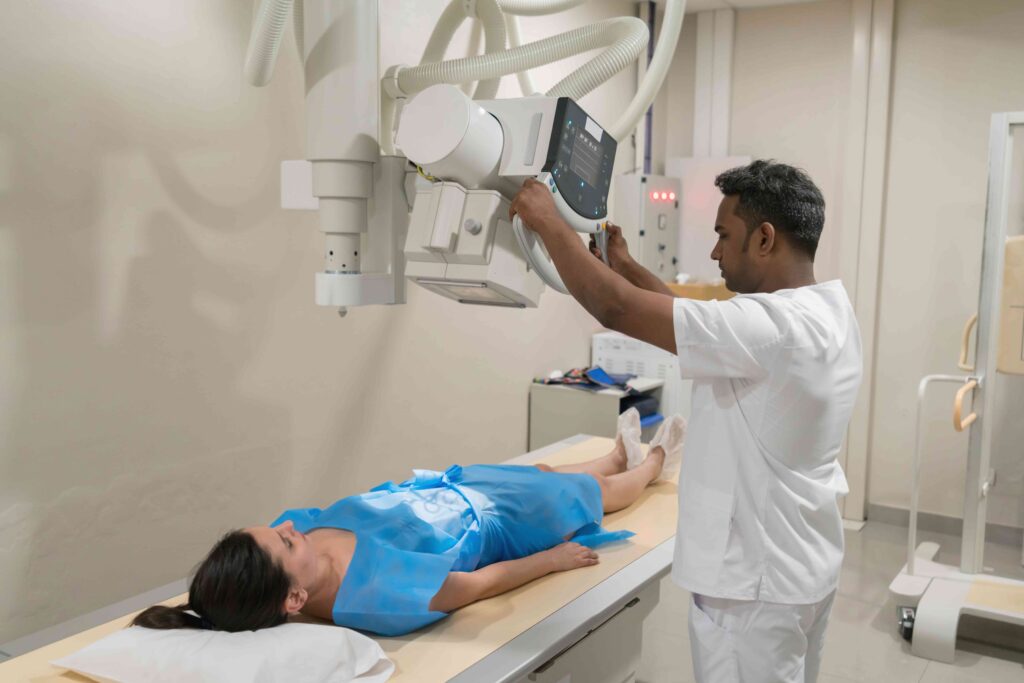:max_bytes(150000):strip_icc():format(jpeg)/Health-GettyImages-917730202-ba5f93909841457ca12ee6971f367f19.jpg)
Biliary colic is abdominal pain that develops due to a blockage in the bile ducts, which carry bile (digestive fluid) from the liver to the gallbladder and into the small intestine.
When gallstones block the bile ducts, bile builds up in the gallbladder, causing biliary colic (a “gallbladder attack”). This causes intense pain in the upper right abdomen that can last minutes up to several hours, usually after eating a heavy meal. You may experience nausea and vomiting.
Your primary care provider (PCP) may refer you to a gastroenterologist, a healthcare provider specializing in gastrointestinal tract (digestive system) and liver conditions. Initial treatment for biliary colic may focus on pain management and dietary modifications, but experiencing one episode increases the risk of future attacks and potential complications. Cholecystectomy (surgical removal of the gallbladder) may be necessary.
Medications are often the first line of treatment for biliary colic, providing significant relief by reducing pain and inflammation. Here are some medications that may be used:
Pain Relievers
Nonsteroidal anti-inflammatory drugs (NSAIDs) can relieve biliary colic pain. Your healthcare provider may prescribe oral NSAIDs (taken by mouth), such as diclofenac, ketorolac, flurbiprofen, ibuprofen, or tenoxicam, to reduce pain and inflammation.
In some cases, they may prescribe intravenous (IV) NSAIDs to deliver medicine through a vein or intramuscular injections for more immediate pain relief. Long-term use of NSAIDs can cause gastrointestinal problems, such as ulcers or bleeding.
Antispasmodics
Antispasmodic drugs, such as hyoscyamine butyl bromide (scopolamine) and drotaverine, can help relax the gallbladder muscles to prevent spasms and possibly reduce biliary colic pain. However, these medicines are sometimes ineffective and can cause side effects like dry mouth, dizziness, sweating, and drowsiness.
Antiemetics
Antiemetic medicines like ondansetron, droperidol, and metoclopramide can help control nausea and vomiting associated with biliary colic. Possible side effects of antiemetics include constipation, confusion, difficulty urinating, visual disturbances like blurry vision, and rapid heart rate.
Dissolution Therapy
Gallstone dissolution therapy involves taking oral medicines, such as Actigall (ursodiol) and Chenix (chenodiol), to break up and slowly dissolve small cholesterol gallstones. This long-term treatment may require months or years of medication to break up stones. Possible side effects include headache, dizziness, frequent or painful urination, muscle pain, and hair loss.
If your symptoms are severe or you have a history of recurrent biliary colic episodes, your healthcare provider may recommend removing the gallbladder or breaking up gallstones through surgical or nonsurgical procedures.
Cholecystectomy
Surgical removal of the gallbladder, cholecystectomy, is the only definitive treatment for biliary colic. Although the gallbladder stores bile, it is not an essential organ. The liver can directly release bile into the small intestine without the gallbladder. Your healthcare provider may perform a cholecystectomy in one of two ways:
- Laparoscopic cholecystectomy: This minimally invasive procedure involves a surgeon making small incisions in the abdomen and inserting a laparoscope—a flexible tube with a camera and surgical tools—into the abdomen to visualize and remove the gallbladder. Most people can resume normal activities within 1-2 weeks after laparoscopic surgery, though complete recovery may take up to six weeks.
- Open cholecystectomy: This surgery involves a surgeon making a large incision in the abdomen to access and remove the gallbladder directly. It may be necessary in complex cases involving severe inflammation or scarring from previous surgeries. You may need to stay in the hospital for up to one week afterward so healthcare providers can monitor your health. Recovery takes 4-8 weeks, and you may experience abdominal pain, bruising, and redness around the incision site.
Endoscopic Retrograde Cholangiopancreatography (ERCP)
An endoscopic retrograde cholangiopancreatography (ERCP) procedure combines endoscopy and X-ray imaging to visualize the bile ducts, gallbladder, and pancreas. Your healthcare provider may recommend ERCP if you have recurrent biliary colic and cannot undergo gallbladder removal surgery or if a gallstone is stuck in the bile duct.
You will receive a sedative medication to reduce discomfort during the procedure. Your provider will insert an endoscope (thin, flexible tube with a camera) into your mouth, stomach, and small intestine. They will inject a contrast dye to highlight the bile ducts to help identify and remove gallstones blocking the ducts.
You may stay at the hospital or surgical center for up to six hours following an ERCP so the sedative medication can wear off. Nausea, bloating, or a sore throat is possible after the procedure. Your healthcare provider may ask you to wait up to 24 hours before eating solid food.
Extracorporeal Shock Wave Lithotripsy (ESWL)
Extracorporeal shock wave lithotripsy (ESWL) is a noninvasive procedure that uses high-energy sound waves to break up gallstones into smaller pieces that can easily pass through the bile ducts.
During the ESWL procedure, ultrasound or X-ray imaging helps healthcare providers determine where to target the gallstones. A lithotripter device generates shock waves that break the gallstones into fragments. The procedure typically takes 45-60 minutes.
ESWL is not a standard treatment for biliary colic because many people who undergo it develop future gallstones.
Lifestyle modifications can help manage biliary colic symptoms and reduce the risk of future gallbladder attacks. Here are some possible changes you will need to make:
Diet
A low-fat diet can help prevent gallstone formation and lower the risk of biliary colic. Eat a fiber-rich diet with plenty of whole grains, fruits and vegetables, and lean proteins. Limit your intake of high-fat and processed foods and refined carbohydrates. Eat healthy fats, such as fatty fish (e.g., salmon) and olive oil, to promote gallbladder health.
Avoid eating large meals that can trigger gallbladder attacks, and opt for smaller, more frequent meals throughout the day.
Weight Management
Obesity is a risk factor for gallstones. A nutritious, balanced diet and regular exercise can help you achieve and maintain a healthy body weight and reduce the risk of gallstones and future biliary colic episodes.
Sudden weight loss can increase the risk of gallstone formation, so aim for a gradual reduction. Focus on healthy lifestyle modifications rather than sudden drops in body weight.
The prognosis for people with biliary colic is generally good with appropriate treatment. Treatment can effectively manage symptoms, prevent complications, and help prevent future gallbladder attacks.
Untreated biliary colic can lead to serious complications such as gallbladder inflammation, bile duct inflammation, jaundice (yellow-tinted skin and eyes), and pancreatitis (inflammation of the pancreas). Each of these requires prompt medical attention and treatment and, in some cases, hospitalization.
Living with biliary colic involves adopting healthy lifestyle habits to manage symptoms and prevent future episodes. These may include dietary modifications and maintaining a healthy weight.
Biliary colic pain can be intense and prevent you from engaging in your daily activities. If you experience frequent biliary colic episodes, talk to your healthcare provider about treatment options that can prevent gallstones and improve your quality of life.

